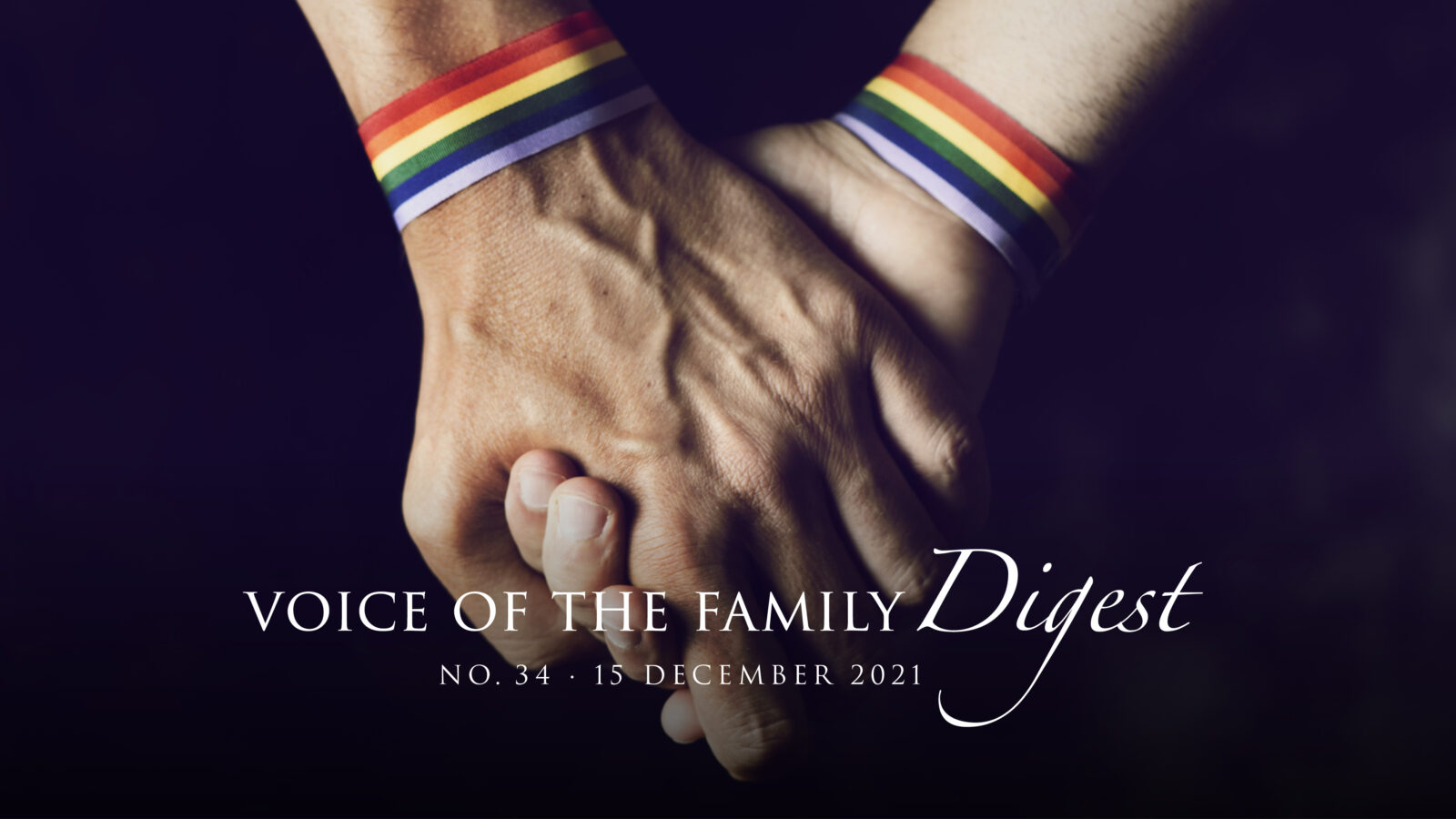New “Catholic” newspaper features strong LGBT+ propaganda
15 December 2021

by John Smeaton
The launch edition (December 2021) of a new British “Catholic” newspaper, The Catholic Post, contains strong propaganda and an arguably blasphemous message in support of the LGBT+ agenda. Tragically, the same kind of message is currently backed by the Catholic bishops of England and Wales.
A story taking up the whole news space on one of its pages is headlined “LGBT+ Mass reflection”. A subtitle reads, “The parish had put rainbow bunting around the church car park and greeted us with smiles under rainbow face masks”. A rainbow flag is emblazoned on the top right hand corner of the story, which gives an account of a special Mass for the LGBT+ Pastoral Team of the Diocese of Nottingham, celebrated by Bishop Patrick McKinney, the Bishop of Nottingham, in Cleethorpes, Lincolnshire.
According to Gilbert Baker, the artist who created the rainbow symbol in 1978, flags are about proclaiming “power”. As Dr Tom Rogers pointed out in an article published by Voice of the Family in September 2021, the power of the LGBT+ agenda permeates the teaching of Bishop McKinney and that of the Catholic Bishops’ Conference of England and Wales.
The technique used by the bishops to promote the LGBT+ agenda is to obscure the distinction between homosexuality and homosexual persons.
The Congregation for the Doctrine of the Faith says in their 2003 document, Considerations regarding proposals to give legal recognition to unions between homosexual persons:
“The Church teaches that respect for homosexual persons cannot lead in any way to approval of homosexual behaviour or to legal recognition of homosexual unions.”
By way of contrast, Learning to Love, published on behalf of the Catholic Bishops of England and Wales by the Catholic Education Service, offers Catholic educators the following description of homosexual relationships:
“Here we would like to emphasise that this exalted form of love exists just as powerfully in relationships between people of the same sex as it does in heterosexual relationships. We applaud the great progress that has been made in countering all forms of discrimination against homosexuality in recent times, and wish to collaborate with efforts to make such discrimination obsolete.” (p.17)
The fact of such false teaching, coming from the Catholic bishops such as Bishop McKinney, is what makes the climax of The Catholic Post story so deeply disturbing for faithful Catholics:
“After the Mass, we were all welcomed to the parish hall for some refreshments. The parish had laid on a marvellous spread with the pièce de résistance being a homemade cake with the parish logo, a multicoloured triquetra, on it. The shapes represent the persons of God; the Father, Son and Spirit in their equality and diversity and the colours representing the equality and diversity of the people of God. Bishop Patrick had the honour of cutting the cake on behalf of us all.”
Catholic teaching is that man, the image of God, was created “male and female” (Gen 1:27). Men and women are equal as persons and complementary as male and female. The Congregation for the Doctrine of the Faith says:
“There are absolutely no grounds for considering homosexual unions to be in any way similar or even remotely analogous to God’s plan for marriage and family. Marriage is holy, while homosexual acts go against the natural moral law. Homosexual acts ‘close the sexual act to the gift of life. They do not proceed from a genuine affective and sexual complementarity. Under no circumstances can they be approved.'”
By way of contrast, the highlight of The Catholic Post story is the appearance of a rainbow-like cake, seeming to represent the LGBT+ agenda, shaped in a way to symbolise “the persons of God; the Father, Son and Spirit in their equality and diversity and the colours representing the equality and diversity of the people of God”.
The Catholic Post story borders on blasphemy — as, indeed, does Learning to Love, the document for Catholic educators backed by the Catholic Bishops of England and Wales.
